Geological Hazards
Earthquake
 Earthquakes are caused by a sudden movement of the earth’s crust due to shifting plate tectonics or underground volcanic activity. The earth’s surface is made up of many plates or separate pieces. Some of these plates also have fractures in them. When hot volcanic magma builds up, or the plates push slowly against each other, potential energy builds up just like compressing a spring. When the energy is released suddenly, the earth shakes violently. The closer you are to the epicenter (where the built up energy is released), the more violent the earthquake is.
Earthquakes are caused by a sudden movement of the earth’s crust due to shifting plate tectonics or underground volcanic activity. The earth’s surface is made up of many plates or separate pieces. Some of these plates also have fractures in them. When hot volcanic magma builds up, or the plates push slowly against each other, potential energy builds up just like compressing a spring. When the energy is released suddenly, the earth shakes violently. The closer you are to the epicenter (where the built up energy is released), the more violent the earthquake is.
Mitigation of earthquake hazards:
- Flexible pipe fittings to water and gas lines so they can move rather than break during an earthquake
- Vibration-sensitive automatic shut-off valves
- Bolt down or secure large objects and pieces of equipment
- Building construction that complies with regulatory requirements to withstand an earthquake
- Minimize the weight of ceiling mounted fixtures and ensure they are anchored securely
- In coastal areas be prepared for possible tsunamis which can be caused by earthquakes
Tsunami
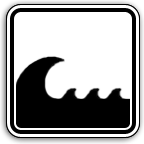 Tsunamis are large waves or series of waves caused by underwater disturbances such as earthquakes, landslides, or falling meteorites. Tsunami’s can travel hundreds of miles an hour and reach 100 feet or more in height. They affect coastal areas and can cause a wide array of destruction including force of impact, severe flooding and moving debris, damage to structures, roads and utility systems, and contamination of drinking water.
Tsunamis are large waves or series of waves caused by underwater disturbances such as earthquakes, landslides, or falling meteorites. Tsunami’s can travel hundreds of miles an hour and reach 100 feet or more in height. They affect coastal areas and can cause a wide array of destruction including force of impact, severe flooding and moving debris, damage to structures, roads and utility systems, and contamination of drinking water.
Mitigation of tsunamis:
- Primary or alternate facilities well above sea level
- Primary or alternate facilities that are away from coastal beaches
- Strong concrete and steel construction methods for structures
- Breakwaters and other obstacles that minimize the impact force
- Know the tsunami warning procedures for your area
Volcano
 Volcanoes are vents in the earth’s surface that lead down to the Earth’s molten interior. When gas or magma builds up enough pressure, they cause an eruption as they push through to the surface. This sudden release of force can cause earthquakes, and releases under the ocean can cause tsunamis. A violent volcanic eruption can flatten everything in the surrounding area, and throw debris, molten rock and thick ash into the atmosphere and for miles around the eruption. Hot magma flows can cause fires, and falling ash can turn rivers into destructive mud flows.
Volcanoes are vents in the earth’s surface that lead down to the Earth’s molten interior. When gas or magma builds up enough pressure, they cause an eruption as they push through to the surface. This sudden release of force can cause earthquakes, and releases under the ocean can cause tsunamis. A violent volcanic eruption can flatten everything in the surrounding area, and throw debris, molten rock and thick ash into the atmosphere and for miles around the eruption. Hot magma flows can cause fires, and falling ash can turn rivers into destructive mud flows.
Mitigation of volcanos:
- Primary or alternate facilities away from active volcanoes and away from low-lying areas or river valleys surrounding volcanoes.
- Building structures and equipment storage should be well sealed against volcanic ash which can make breathing difficult and disrupt machinery.
- High pitched roofs on structures will guard against collapse caused by heavy ash accumulations
- Know the volcano warning procedures for your area
Landslide, Mudslide, Subsidence
 Landslides are massive flows of rock, earth and other debris down a mountain, hillside or other slope. When mixed with heavy rains or rivers they can become mudslides. A subsidence occurs when there is a hollow beneath a mass of earth that suddenly caves in. These can be caused by earthquakes, volcanic eruptions, heavy rains, erosion, and fractures in rock structures. Deforested areas are ideal locations because erosion occurs more quickly without the protection of ground cover and living root systems from trees and plants. Landslides, mudslides and subsidence can occur suddenly, and move quickly, destroying everything in their path. They often pick up debris and increase in size and power like an avalanche.
Landslides are massive flows of rock, earth and other debris down a mountain, hillside or other slope. When mixed with heavy rains or rivers they can become mudslides. A subsidence occurs when there is a hollow beneath a mass of earth that suddenly caves in. These can be caused by earthquakes, volcanic eruptions, heavy rains, erosion, and fractures in rock structures. Deforested areas are ideal locations because erosion occurs more quickly without the protection of ground cover and living root systems from trees and plants. Landslides, mudslides and subsidence can occur suddenly, and move quickly, destroying everything in their path. They often pick up debris and increase in size and power like an avalanche.
Mitigation of landslide, mudslide, and subsidence hazards:
- Primary or alternate facilities away from slopes, mountain edges and natural water drainage valleys or rivers
- Flexible pipe fittings to water and gas lines so they can move rather than break during an earthquake
- Get a ground assessment of the property to ensure the earth is solid, and that there is adequate drainage away from the property
Glacier, Iceberg
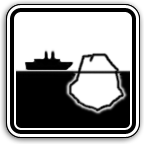 Glaciers are masses of snow and ice in mountainous areas that usually stay all year long. Earthquakes, heavy precipitation, and warmer seasons can cause fracturing of these large masses of ice and result in slides. Melting ice and snow in the spring can cause river levels to rise significantly in the springtime. This can also produce new streams in unexpected areas or mudslides. Icebergs are masses of ice and snow floating freely in the cold northern and southern oceans. They can be hundreds of feet tall, and fracture or break apart frequently, especially in the warmer seasons. Icebergs can also contain hidden dangers to sea-going vessels below the surface of the water in the form of large masses of ice.
Glaciers are masses of snow and ice in mountainous areas that usually stay all year long. Earthquakes, heavy precipitation, and warmer seasons can cause fracturing of these large masses of ice and result in slides. Melting ice and snow in the spring can cause river levels to rise significantly in the springtime. This can also produce new streams in unexpected areas or mudslides. Icebergs are masses of ice and snow floating freely in the cold northern and southern oceans. They can be hundreds of feet tall, and fracture or break apart frequently, especially in the warmer seasons. Icebergs can also contain hidden dangers to sea-going vessels below the surface of the water in the form of large masses of ice.
Mitigation of glacier hazards:
- Primary or alternate facilities away from slopes, mountain edges and natural water drainage valleys or rivers
- Flexible pipe fittings to water and gas lines so they can move rather than break during an earthquake
- Get a ground assessment of the property to ensure the earth is solid, and that there is adequate drainage away from the property
Mitigation of Icebergs:
- Do not stray out of normal shipping lanes in Arctic or Antarctic seas
- Have adequate survival rafts, suits, and emergency beacons / communications available
- Get up to date iceberg warnings, and steer clear of ice flows
Meteorological Hazards
Flood, Flash Flood, Seiche, Tidal Surge
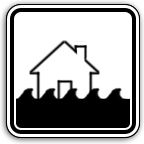 Floods can develop slowly over a number of days or occur suddenly (flash flood). Heavy rains (including unseen precipitation upstream) and rapidly melting snow-packs can cause river levels to rise. Levee breaches, high tides, tsunamis, and seismic activity causing large waves in lakes (a seiche) can also cause floods. A flash flood is a massive amount of water which can quickly destroy bridges, wash away roads and carry destructive debris through low-lying floodplains. Floods cause water damage to everything impacted, structure erosion or destruction, loss of utilities, and water supply contamination. Other than rescue operations by authorities, little can be done to conduct recovery operations until the floodwaters subside. Large areas and access to those areas is often affected.
Floods can develop slowly over a number of days or occur suddenly (flash flood). Heavy rains (including unseen precipitation upstream) and rapidly melting snow-packs can cause river levels to rise. Levee breaches, high tides, tsunamis, and seismic activity causing large waves in lakes (a seiche) can also cause floods. A flash flood is a massive amount of water which can quickly destroy bridges, wash away roads and carry destructive debris through low-lying floodplains. Floods cause water damage to everything impacted, structure erosion or destruction, loss of utilities, and water supply contamination. Other than rescue operations by authorities, little can be done to conduct recovery operations until the floodwaters subside. Large areas and access to those areas is often affected.
Mitigation of floods, etc:
- Primary or alternate facilities away from floodplains, natural drainage systems such as rivers and valleys
- Elevated and reinforced construction of structures
- Elevate utility access points and electrical panels
- Install check-valves in sewer and water drains
- Construct levees or barriers to prevent floodwaters from entering property or structures
Drought
 A drought is a period of water shortage when there is not enough fresh water available for drinking consumption, livestock and crops. When mountain snow-packs are mild or precipitation is sparse, water sources (reservoirs, aquifers, rivers) may not be recharged as quickly as water is being taken from them for consumption purposes. Extreme heat waves can also contribute to drought as more water is needed because so much is lost through evaporation and transpiration. Available water sources can become contaminated during a drought when there is not enough flow through the water table to keep them fresh and this adds to the problem. Droughts can create dry conditions in wilderness and urban areas that make fires more likely and more damaging.
A drought is a period of water shortage when there is not enough fresh water available for drinking consumption, livestock and crops. When mountain snow-packs are mild or precipitation is sparse, water sources (reservoirs, aquifers, rivers) may not be recharged as quickly as water is being taken from them for consumption purposes. Extreme heat waves can also contribute to drought as more water is needed because so much is lost through evaporation and transpiration. Available water sources can become contaminated during a drought when there is not enough flow through the water table to keep them fresh and this adds to the problem. Droughts can create dry conditions in wilderness and urban areas that make fires more likely and more damaging.
Mitigation of drought:
- Have rationing and conservation procedures for periods of drought
- Use water-saving appliances and equipment to aid in general conservation
- Secure backup sources of water for consumption and irrigation
- Water filtration or purification equipment to clean potable sources affected by drought induced contamination
Fire (Forest, Range, Urban)
 Fires can spread very quickly, and produce a wide variety of dangers. They can superheat the air around you which can sear your lungs, and as they burn, they use up the surrounding oxygen, replacing it with poisonous gases which can cause disorientation and asphyxiation.
Fires can spread very quickly, and produce a wide variety of dangers. They can superheat the air around you which can sear your lungs, and as they burn, they use up the surrounding oxygen, replacing it with poisonous gases which can cause disorientation and asphyxiation.
Forest and range fires:
Wildfires are caused by lightning strikes, accidents, and lack of caution by people in wilderness areas. These fires are especially dangerous during dry seasons and can be aggravated by winds, and dense brush. These fires travel faster than a person can run up valley slopes and burning embers can be carried for great distances by the thermal winds produced by a fire allowing the fires to cross areas where there is no little fuel for them to advance.
Urban fires:
Fires in urban areas have many possible causes, including: faulty or substandard electrical wiring, overloaded circuits and electrical outlets, flammable liquids and substances coming into contact with sparks, flames, or static electricity, chemical reactions, inadequate shielding of heat sources, un-serviced chimneys, lack of caution with sources of fire and combustible materials, or willful acts of arson. They can spread to neighboring structures and erupt with explosive force when fed with fresh air when doors or windows leading to the fire are opened.
Mitigation of forest and range fires:
- Strong concrete and steel construction methods for structures
- Access of wilderness areas should be minimized during dry seasons
- Facilities should have adequate space between them and combustible brush or forested areas
- Combustible materials and objects should not be stored in an exposed manner
- Processes or procedures involving heat sources should be carried out away from brush and trees
Mitigation of urban fires:
- Ensure that all electrical wiring, equipment, and installations comply with regulations
- Ensure that automatic sprinkler systems, smoke detectors, fire extinguishers, alarm systems, fire lanes and other access points for emergency responders comply with regulations
- Secured access points (doors and windows) should be easily opened from inside to ensure emergency exit is possible
- Store flammable liquids and materials in approved containers and in well ventilated storage areas
- Keep open flames, sparks, and heat sources away from combustible materials
Snow, Ice, Hail, Sleet, Avalanche
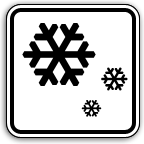 Description – Snow, Ice, Hail, and Sleet:
Description – Snow, Ice, Hail, and Sleet:
These are common winter conditions. At extreme levels they can greatly hamper mobility and transportation. Hail can cause physical impact damage. Trees and roofs can be weighted down with heavy snow falls causing collapse. Downed trees can damage power lines and other structures. Sudden snow falls in mild weather can melt quickly causing floods.
Description – Avalanches:
Avalanches are large masses of snow and ice flowing down a mountain, hillside, or other slope. Much like landslides, they travel with great speed and force, destroying much in their path. Avalanches can be caused by earthquakes and other seismic activity, and by mild temperature conditions that allows the upper snow-pack to separate from its base. Avalanches can pick up trees and other debris as they fall.
Mitigation of snow, ice, hail, and sleet hazards:
- High pitched roofs on structures will guard against collapse caused by heavy snow accumulations
- Follow mitigation for Extreme Temperatures (cold)
Mitigation of avalanches:
- Primary or alternate facilities away from mountains and hillsides
- Support a controlled avalanche program to minimize threatening snow-packs on nearby slopes
Windstorm, Tropical Cyclone, Hurricane, Tornado, Water Spout, Dust / Sand Storm
 Storm force winds are caused when warm and cool weather systems converge and can cause a great deal of destruction. They carry flying debris, water, or sand. The water carried by these storms and accompanying severe rainfall can cause flooding in low lying areas. Wind speeds can reach 150 mph for large hurricanes, and up to 300 mph for tornados. These wind speeds can destroy most building structures and cause injury or death from flying debris or collapsing structures. Lightning strikes may also accompany such storms. These storms usually knock down power lines, interrupt communications, block roadways with downed trees, and interrupt general mobility, services, and rescue efforts until the storm has passed.
Storm force winds are caused when warm and cool weather systems converge and can cause a great deal of destruction. They carry flying debris, water, or sand. The water carried by these storms and accompanying severe rainfall can cause flooding in low lying areas. Wind speeds can reach 150 mph for large hurricanes, and up to 300 mph for tornados. These wind speeds can destroy most building structures and cause injury or death from flying debris or collapsing structures. Lightning strikes may also accompany such storms. These storms usually knock down power lines, interrupt communications, block roadways with downed trees, and interrupt general mobility, services, and rescue efforts until the storm has passed.
Mitigation of storm hazards:
- Building construction that complies with regulatory requirements to withstand storm force winds
- Install window shutters and sturdy doors to protect access points to the facility
- Create an emergency “safe room” in a basement or ground level room away from exterior walls with a strong, heavy frame that can not be easily uplifted or breached by high pressure winds and flying debris in areas not prone to flooding
- Keep equipment and vehicles stored in protected areas
- Secure backup power and water supplies
- Know the storm warning procedures in your area
Extreme Temperatures (Heat, Cold)
 Description – Extreme Heat:
Description – Extreme Heat:
Extreme heat can be caused by changing weather patterns, the lack of precipitation and cloud cover during warmer seasons, as well as general geography. Periods of extreme heat make the body work harder to maintain its normal temperature. This is aggravated by high humidity and air pollution. Heat related illnesses (cramps, exhaustion, heat stroke) first affect older adults, children, ill or unhealthy persons, and persons over-exerting themselves physically. Extreme heat contributes to drought and fire hazards.
Description – Extreme Cold:
Weather fronts bringing extreme cold can move into an area very quickly. Extreme cold turns precipitation into snow, ice, hail and sleet, and can make mobility in the area very difficult. Extreme cold prevents vehicle engines and other equipment from running properly or at all. The cold can affect electrical and power systems, and cause blockage or breakage of water lines and sewer systems. For persons exposed the hazards are frostbite, hypothermia, and heart trouble or exhaustion from over-exertion.
Mitigation of extreme heat conditions:
- Install air-conditioning equipment and insulate facilities well
- Insulate access points (doors and windows) with weather stripping
- Use awnings, curtains or blinds to shield sun out of facilities
- Perform physical work during the coolest part of the day or in cool or air-conditioned areas to limit exposure
- Secure backup power and water supplies
Mitigation of extreme cold conditions:
- Install heating equipment and insulate facilities well
- Insulate access points (doors and windows) with weather stripping
- Perform physical work sparingly, or in warm, protected areas to limit exposure
- Secure backup power and water supplies
- Insulate water lines
- Keep equipment and vehicles stored in protected areas and in top operating condition
Lightning Strikes
 Thunderstorms produce lightning strikes that are typically 300,000 volts and are hotter than the surface of the sun. Lightning can cause death or cardio-pulmonary injuries, neurological injuries, intense burns, ocular and auditory damage. Lightning strikes are responsible for wildfires, power outages, and damage caused by falling trees or structures that have been struck. Lightning and thunderstorms can bring heavy rains for a brief period as well as hail, flooding, windstorms and tornados.
Thunderstorms produce lightning strikes that are typically 300,000 volts and are hotter than the surface of the sun. Lightning can cause death or cardio-pulmonary injuries, neurological injuries, intense burns, ocular and auditory damage. Lightning strikes are responsible for wildfires, power outages, and damage caused by falling trees or structures that have been struck. Lightning and thunderstorms can bring heavy rains for a brief period as well as hail, flooding, windstorms and tornados.
Mitigation of lightning strikes:
- Remove surrounding weak or delicate trees, branches, and structures that could fall onto the facility if struck by lightning
- Where possible, work areas should be inside under cover
- Have wireless (cordless, cellular, battery operated radio) communications available
- Water pipes and bathroom fixtures should be non-conductive (plastic) insulated
- Use a lightning arrester to guard against power surges to sensitive computer systems and equipment
Famine
 Famines are shortages of food. Food production and availability is limited by economic factors in poor nations. Famines can cause degradation of living standards, economic loss to food exporting nations, and mass starvation. Famines are caused by drought, erosion of fertile soil, insect infestations, plant or animal diseases, war or civil unrest, and catastrophic hazards affecting a large region such as flooding, extreme temperatures, and water contamination. Famine conditions can also be forced by trade disputes or civil actions such as transport or agricultural worker strikes.
Famines are shortages of food. Food production and availability is limited by economic factors in poor nations. Famines can cause degradation of living standards, economic loss to food exporting nations, and mass starvation. Famines are caused by drought, erosion of fertile soil, insect infestations, plant or animal diseases, war or civil unrest, and catastrophic hazards affecting a large region such as flooding, extreme temperatures, and water contamination. Famine conditions can also be forced by trade disputes or civil actions such as transport or agricultural worker strikes.
Mitigation of famine:
- Diverse sources of food supplies should be secured including local agricultural and food production capabilities
- Land and water use in the region should be handled responsibly
- Economic, social, and political stability in the local region as well as food source regions
Biological Hazards
Diseases that Impact Humans and Animals (Plague, Smallpox, Anthrax, West Nile Virus, Foot and Mouth Disease, Avian Flu, coronavirus)
 Diseases that impact humans and animals can vary greatly in their ability to spread quickly or in their fatality rate. Some animal diseases such as BSE (mad cow disease) or avian flu can potentially be passed from animals to humans, often with devastating consequences because people have no natural immunity to such diseases. Animal diseases can affect the food supply and be responsible for shortages and famines. The race to mitigate animal diseases can have other consequences such as restrictions in trade or human mobility due to regional quarantines. Human diseases such as severe flu outbreaks can affect key personnel and their ability to perform. Severe epidemics or outbreaks of deadly disease strains can restrict general mobility and travel, and overburden medical services.
Diseases that impact humans and animals can vary greatly in their ability to spread quickly or in their fatality rate. Some animal diseases such as BSE (mad cow disease) or avian flu can potentially be passed from animals to humans, often with devastating consequences because people have no natural immunity to such diseases. Animal diseases can affect the food supply and be responsible for shortages and famines. The race to mitigate animal diseases can have other consequences such as restrictions in trade or human mobility due to regional quarantines. Human diseases such as severe flu outbreaks can affect key personnel and their ability to perform. Severe epidemics or outbreaks of deadly disease strains can restrict general mobility and travel, and overburden medical services.
Mitigation of diseases:
- Access to facilities or sensitive areas should be limited and controlled
- Wherever possible, physically separate divisions of people with different functions, especially critical functions (example: separate management offices from general labor areas)
- Retain telecommunications and telecommuting abilities to conduct business under public or general quarantine conditions or during travel restrictions
Animal or Insect Infestation
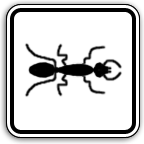 Animal infestation is not common and usually occurs as the result of building facilities into newly developed wilderness areas, or when a foreign species is introduced into the local ecosystem and dominates that system, killing the local animal populations. Rats, mice, and birds tend to be the primary animal infestation pests. Insect infestation is far more common and can be the result of ecological conditions causing rapid population growth, un-cleanliness, or the existence of ample habitat for pests such as dense foliage, wooden structures, or areas containing standing water. Infestations can be a general nuisance, cause physical or structural damage, and spread diseases.
Animal infestation is not common and usually occurs as the result of building facilities into newly developed wilderness areas, or when a foreign species is introduced into the local ecosystem and dominates that system, killing the local animal populations. Rats, mice, and birds tend to be the primary animal infestation pests. Insect infestation is far more common and can be the result of ecological conditions causing rapid population growth, un-cleanliness, or the existence of ample habitat for pests such as dense foliage, wooden structures, or areas containing standing water. Infestations can be a general nuisance, cause physical or structural damage, and spread diseases.
Mitigation of infestations:
- Facilities should follow sound construction methods. Cracks, crevices, exposed wood surfaces or breaches in walls should be repaired
- Remove or control surrounding foliage, trees and unnecessary structures or outside storage of equipment or supplies
- Have a pest monitoring and control plan for all facilities
See also, Reference Guide: Human Caused Hazards